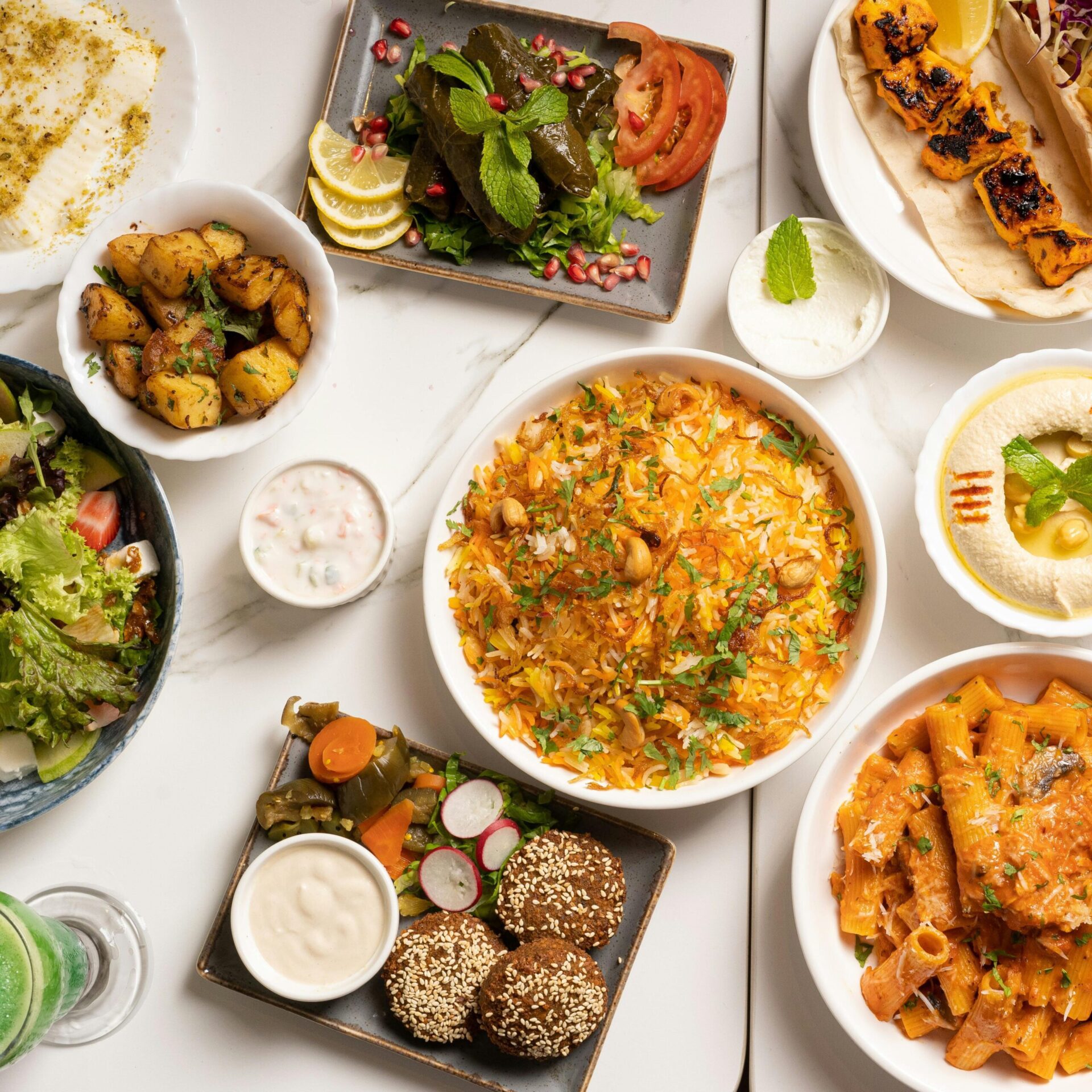In this post, we’ve covered
- What is an Instagram blog
- Examples of Instagram food blogs
- Examples of Instagram blog niches to start
- How to start an Instagram food blog in 6 steps
- How to monetize your Instagram blog and make money
- Tips to grow your Instagram food blog
- Instagram blog limitations
- Alternative: How to start a standard blog in 6 steps and make $10,000/month consistently after 6 months
Instagram is a very powerful platform for growing audiences of different kinds in many niches. You can use Instagram to grow a food blog audience that lets you monetize your account and potentially sell it when you’ve had enough.
In this post, you will learn step-by-step how to use Instagram for food blogging. I have divided it into sections to help you utilize it better in a more useful way.
What is an Instagram blog?
An Instagram blog is correctly known as a vlog but popularly called a blog, it is an Instagram account where you share captivating photos and videos, and engaging captions of content related to foods. It’s like a mini blog focused on visuals and storytelling instead of written content like a more standard blog.
Examples of Instagram food blogs
These are some examples of Instagram food blogs to inspire you.
Some of these accounts have millions of followers. This should not scare you at all, and don’t compare your start with people’s years of growth.
- Vegan Foods: @veganricha, @thefirstmess
- Healthy Eating: @nutritionbykylie, @ambitiouskitchen
- Baking: @thebakefeed, @smittenkitchen
- Food and Travel: @theblondeabroad, @wanderlustkitchen
- Food Photography: @kimberleyhasselbrink, @thelittleplantation
How To Use Instagram For Food Blogging Step-by-step
Using Instagram as a blogging platform for food blogging in summary is all about building or growing an account by posting high-quality food-related shorts, images, and videos. If you do this well, you can grow your account faster and monetize it fast as well.
Start Here
Here’s a roadmap to setting up and building a successful food on Instagram to attract and build royal food-related fans/audience:
Step 1: Create an Instagram Account:
If you don’t have one already, sign up for Instagram specifically for your food blog. Choose a creative and memorable username that reflects your food focus (e.g., @spicy_vegetarian_delights, @pastryperfectionby_lisa).
Step 2: Craft a Compelling Bio
Write a clear and concise bio that tells people what your food blog is about. Include relevant keywords (e.g., “vegan recipes,” “global street food”) and a call to action (e.g., “Follow for delicious eats and travel tips!”). You can always edit this later if you encounter something better.
Step 3: Pick An Attractive Profile Picture
This is your first impression, so make it count! Choose a high-quality image that represents your food blog’s style. It could be a close-up of a mouthwatering dish, your logo, or a photo of yourself enjoying a meal.
This shouldn’t be a setback as you can update it at any time anything good at all is good enough to be used.
Congratulations!
At this point, you will have an Instagram account ready for your food posts, and now is the time to grow your account.
Tips & strategies to grow your food vlog on Instagram
Doing these things will help you to grow your food blog over time to get it monetized and start making money.
- Find Your Food Focus – Decide what kind of food content you’ll create. Will you specialize in specific cuisines (e.g., Italian, Thai), dietary restrictions (gluten-free, paleo), recipe development, restaurant reviews, or a combination?
- Content Pillars – Establish 2-3 core themes to guide your posting (e.g., “Meatless Mondays,” “Weekend Brunch Ideas,” or “Travel Treats”). This gives your audience an idea of what to expect and keeps your feed interesting.
- Natural Light is Key – Whenever possible, utilize natural light for your food photos. Experiment with different angles and positions to find what flatters your dishes.
- Composition Counts – The way you arrange elements in your frame matters. Use the rule of thirds or leading lines to create visually pleasing compositions.
- Food Styling Tips – Learn some basic food styling tricks. Invest in colorful plates and backdrops, and add garnishes to make your food pop. There are many online resources with food styling inspiration.
- Editing Magic (Optional): Explore editing tools like Lightroom or VSCO to enhance the visual appeal of your pictures, but avoid going overboard with filters.
- Snap Scrumptious Photos: Take high-quality photos of your food creations. Experiment with different editing tools to enhance the visual appeal of your pictures.
- Capture Enticing Videos (Optional): Consider creating short recipe videos, cooking demonstrations, or behind-the-scenes glimpses for your Instagram stories or Reels.
- Write Engaging Captions: Don’t just post photos! Write captions that tell a story about the dish, share recipe details (without overwhelming viewers), or ask questions to spark conversation.
- Hashtag Research: Research relevant hashtags for your niche and use a mix of popular and specific ones to increase discoverability, (e.g., #bakingtips, #veganrecipes). Tools like Later or Hashtagify.me can help.
- Engage with Your Audience: Respond to comments, answer questions, and participate in conversations to build connections with your followers.
- Storytelling Through Stories: Utilize Instagram Stories to share glimpses into your culinary adventures, post quick recipe tutorials, or connect with your audience through polls and questions.
- Curate a Cohesive Feed: Maintain a consistent aesthetic style through editing and color palettes. This creates a visually appealing brand identity for your food blog.
- Consider IGTV or Live Features (Optional): As you grow, explore features like IGTV for longer recipe videos or Live features to connect with your audience in real-time.
- Content Calendar and Scheduling: Planning your content calendar and scheduling posts in advance can help you stay consistent and organized. Tools like Later or Hootsuite can help streamline this process. “500 Food Blog Content Ideas”.
- Post Consistently: Regularly posting high-quality content keeps your audience engaged and coming back for more. Aim for posting at least 3-4 times a week.
- Run Contests and Giveaways: Host occasional contests or giveaways related to your food blog content to generate excitement and attract new followers who might be interested in visiting your blog.
- Collaborate with Other Food Bloggers: Partner with other food bloggers in your niche for shoutouts or collaborations. This can help expand your reach and introduce your blog to a wider audience.
We have a complete guide to grow your Instagram account faster.
If you want a more traditional profitable making blog we have a quick complete guide on “Tips and strategies to build a successful blog”
How To Make Money From Your New Food Instagram Blog
There are lots of ways you can make money from your food vlog on Instagram, but here are the three most relevant and efficient ways to do so in most cases;
- [a]. Selling your unique product to your audience
- [b]. Accepting and looking for sponsorships
- [c]. Selling the account at some point
Here is a simple guide on “How To Make Money Blogging“
Alternative: How To Start A More Profitable Food Blog and make $5,000/month In 6 Steps
To make the most money blogging about food you can start a more professional food, in a platform that you own and control to start making money from the first day on-like from Instagram you need to grow which is very likely to take a good number of months of years to grow it and start making money.
With a standard blog, you can get started today, publish your first post the same day monetize it with ads, and start making money immediately as your traffic grows.
On Instagram, you can make around $300 – $2k even after you have grown your account to a certain extent whereas with a blog you can make as much as $30k/month just like the food blog “Pinch of Yum” by Lindsay, who started the blog as a fourth-grade teacher, now she makes over $80k/month from her blog “Pinch of Yum”.
Here is how you can start a standard food blog today and grow your income over time as you learn and get better;
- Step 1: Click on “HostGator“ to host your blog
- Step 2: Choose your preferred hostgator plan
- Step 3: Choose your preferred domain & complete your sign-up
- Step 4: Within your Hostgator account “Install WordPress” your blogging platform
- Step 5: Within WordPress choose your blog theme [A Pre-built Site]
- Step 6: Remove, add, or customize the pre-designed pages and you can also create and customize as many as possible blog posts as you want.
To some, this might be complicated even though it’s not, we have a complete detailed post on how to start a highly profitable food blog and how you can make money from it. “How to start a profitable food blog”




